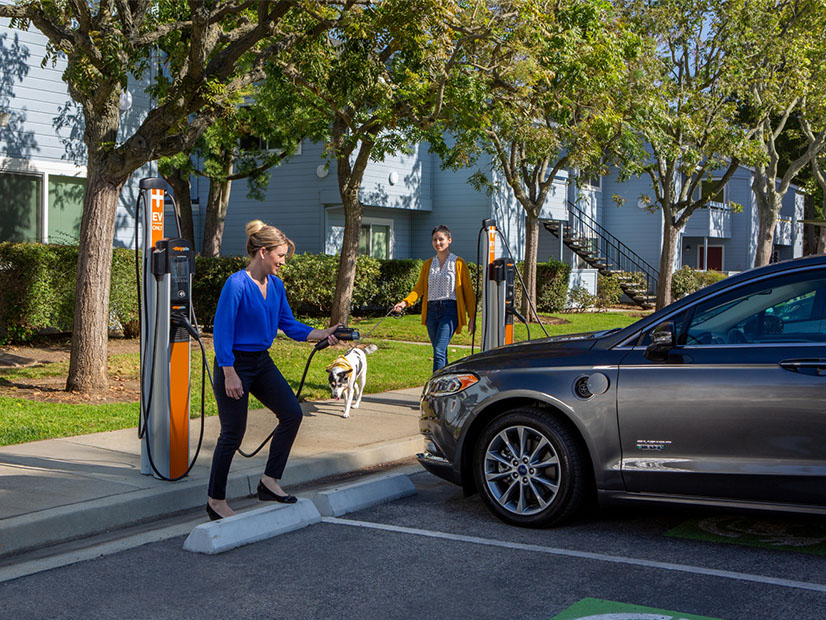With electric utilities as its target customers, vehicle-to-grid software startup WeaveGrid knows that utility culture may not be the best at nurturing and accelerating clean tech innovation.
But some utilities get that, and they have decided to externalize their innovation efforts to compensate for it.
“The Sacramento Municipal Utility District [SMUD] has a long history of being a very innovative company … but we also recognized that we do not move at the speed of light; and even though we’ve sped up our cycles, we still move like a utility,” Arlen Orchard, former SMUD CEO and current board chair for the California Mobility Center (CMC), said Tuesday.
Launched in 2019, CMC was the “brainchild of SMUD,” Orchard said during the virtual Smart Electric Power Alliance Grid Evolution Summit. While SMUD is part of CMC’s advisory board, the center is a separate entity from the utility.
Orchard, who also is strategic adviser at EnerTech Capital, said CMC is a nonprofit, public-private consortium that functions as an accelerator for new, clean transportation technologies.
For WeaveGrid, participating in utility-related accelerator programs provides an opportunity to get feedback from its primary customers, CEO Apoorv Bhargava said during the event.
“It helps us accelerate what is generally a pretty long sales cycle for the utility,” he said.
In April, the Dominion Energy Innovation Center (DEIC) selected WeaveGrid as a member of its 2021 cohort. Like CMC, DEIC is a nonprofit, public-private partnership that accelerates clean tech and originated from a utility (NYSE:D).
“From our founding [in 2009], our goal was to help decarbonize Virginia’s economy, create a cleaner, safer, more reliable grid, and to do that by supporting the entrepreneurs that were going to create the companies that would get us there,” DEIC Director Adam Sledd said during the event.
The DEIC cohort members participate in an 18-week program that includes networking space and mentoring to help their companies grow quickly.
“Navigating utilities, particularly when you’re trying to make a sale … and helping them get comfortable with innovative solutions is generally hard,” Bhargava said.
His company, which supplies smart EV grid integration solutions to utilities, also participated in the Duke Energy-related (NYSE:DUK) Joules Accelerator. In May, the company secured $15 million in Series A funding for its next stage of growth.
WeaveGrid’s readiness for seed funding positioned the company perfectly for a spot with DEIC, according to Sledd.
“In the last few years, we’ve gone from working with really early-stage companies to creating the DEIC Accelerate Program, where we bring in mostly companies that are at a little later stage,” he said.
DEIC looks for companies that have been around for a while, completed a seed funding round, and maybe even completed a pilot, according to Sledd.
“They are what we call ‘ready for primetime,’” he said. “They are ready to come into a Fortune 500 utility and meet some people, spend some time doing business development, and then hopefully do a pilot project that helps Dominion, or any other utility partner, move along in their innovation journey.”
CMC also selects later-stage startups for its program, which Orchard said is focused on rapid commercialization.
“We’ve put together a group of service providers narrowly tailored to the needs of the company and its products,” he said. The center provides access to everything from prototyping to initial manufacturing to navigating the California regulatory environment, he added.
It’s all done in “a very curated fashion,” he said. “It helps them move through things more quickly and not have to figure it out on their own.”
While CMC and DEIC try to bridge the agile life of a startup and the slower timeline of a utility business model, it can be a challenge driving utility innovation from the outside.
DEIC overcomes that hurdle by listening to utility employees and understanding the problems that they are currently trying to solve.
“We’re bringing them solutions that they asked for and that are already on their to-do lists for the year,” Sledd said. “We’re being responsive, rather than just trotting out some cool startups.”
Eventually, Orchard said, what happens in the area of innovation can begin to influence a necessary cultural shift within a utility.



